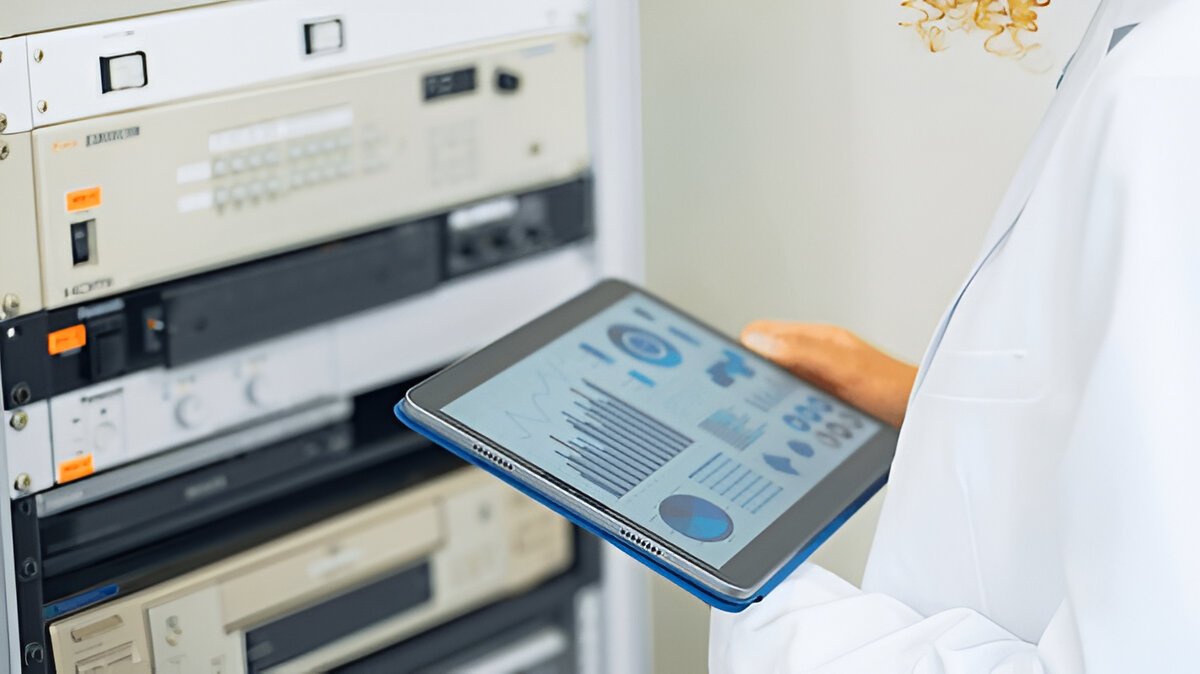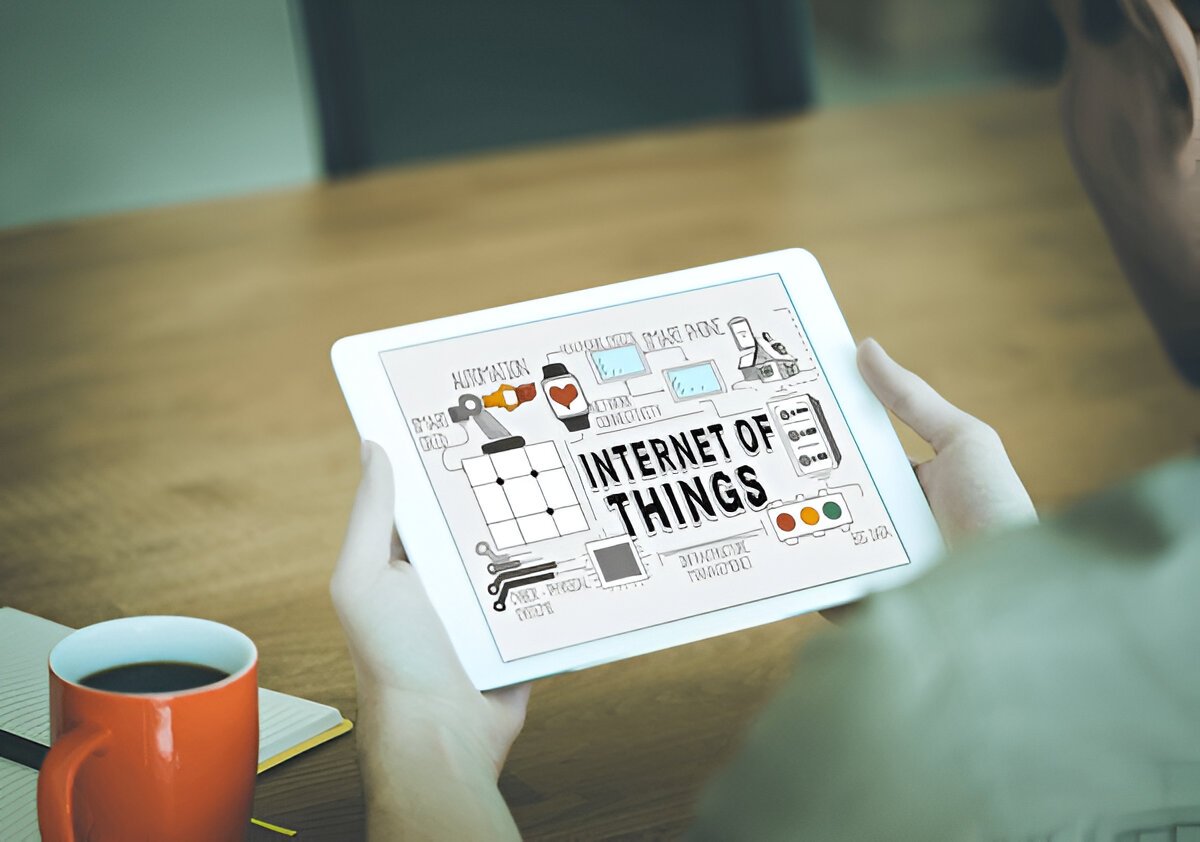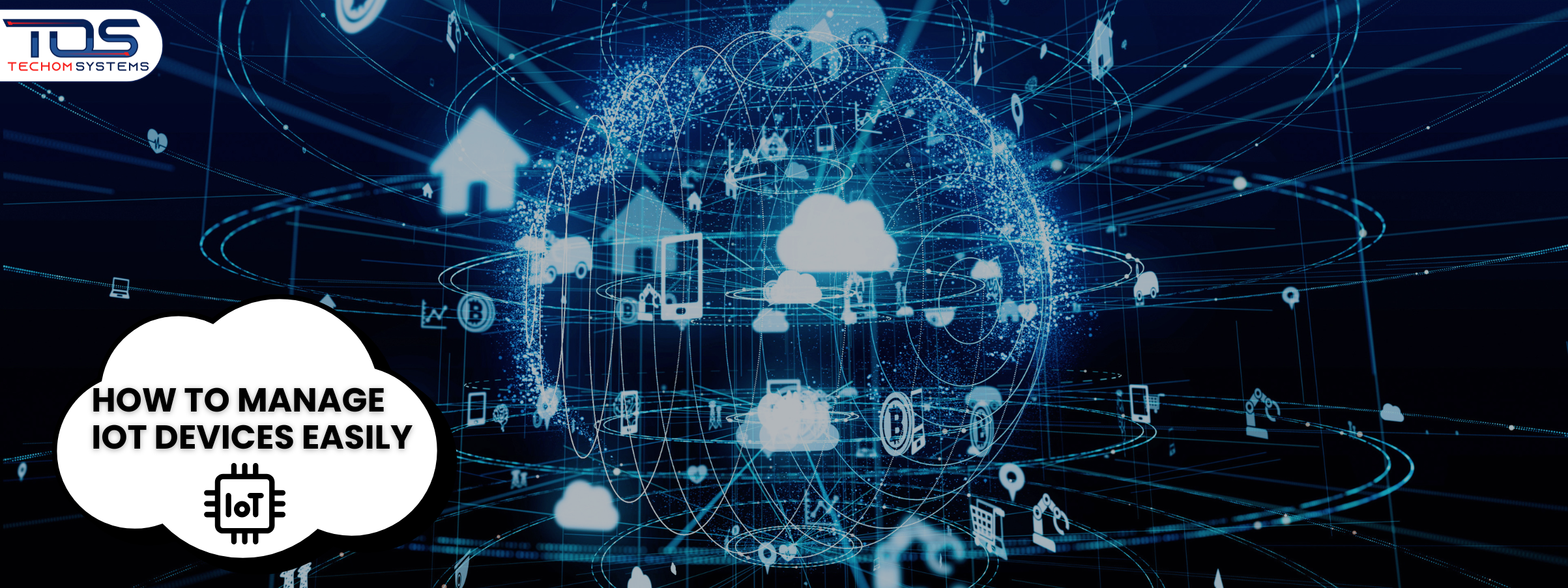Summary: Before diving in, I want to give you a quick idea of what you will learn in this blog. I will show you how to manage IoT devices easily and explain why managing them efficiently is essential for maintaining strong business performance. I will also cover how mobile device management solutions make control easier and share the best practices for IoT device management that help prevent downtime.
You will also see how our team troubleshoot common IoT device issues before they become serious and the steps I take to strengthen control, reduce risks and boost productivity.
If your IoT devices are already showing signs of slowdown or irregular performance, don’t wait until the situation escalates. Email us at hello@techomsystems.com.au and our team help you set up a smarter, faster and more reliable IoT management process before those issues grow.
Have You Ever Struggled To Keep Track Of Connected Devices?
Imagine this: You are in your office checking reports when you notice that several IoT devices across different locations are not sending data. Alerts are delayed, cameras are offline and sensors are not updating. The team is frustrated, productivity drops and you are scrambling to figure out what went wrong. This is a scenario many businesses face when they lack a proper management system.
I understand this challenge and know how stressful it can be when even small glitches in your IoT network can disrupt operations. The solution lies in learning how to manage IoT devices easily. By using mobile device management solutions and following best practices for IoT device management, you can monitor devices remotely, detect issues early and prevent minor problems from turning into major disruptions.
In this blog, I will also explain troubleshooting common IoT device issues and outline practical steps to handle challenges for IoT device management effectively. These strategies allow you to stay ahead of potential problems, keep your devices performing reliably and protect your IoT network from unexpected disruptions.
Free Guide For You: Step By Step Guide To IoT Management For Your Business
Understanding The Importance Of Smart IoT Management

Managing IoT devices effectively is not just a technical task, it is a key part of keeping business operations running smoothly. Every connected device acts like a small data engine, collecting information and supporting decision making. When devices are left unmanaged, small problems can quickly turn into major disruptions that affect productivity, security and overall performance.
From my experience with IoT systems, I have noticed that companies without a structured management approach often spend more time troubleshooting issues than focusing on growth and innovation. Understanding the importance of smart IoT management helps prevent these problems before they impact the business. Here are the main reasons why smart IoT management matters:
- Reduces Downtime
Proper monitoring and structured management help identify potential issues early. By using mobile device management, you can detect problems before they cause interruptions in your operations. - Improves Security
Unmanaged devices are vulnerable to cyber threats. Following best practices for IoT device management ensures data stays secure and access is controlled effectively. - Enhances Efficiency
A well managed IoT system allows you to monitor IoT devices remotely, reducing manual checks and freeing up your team to focus on more strategic tasks. - Supports Scalability
As your business grows and the number of connected devices increases, a structured management strategy helps you scale efficiently without running into frequent operational problems.
Key Takeaway
Understanding the importance of smart IoT management helps you stay proactive, protect your devices and maintain smooth business operations. By focusing on monitoring, security and efficiency, you can prevent small issues from turning into major challenges.
Did You Know:
I often see businesses struggling with managing multiple IoT devices efficiently. Here are some facts that highlight why it matters:
- Over 60 percent of businesses face difficulties monitoring IoT devices remotely because of outdated systems
- Using automated management tools can reduce maintenance costs by almost 25 percent each year
- Proper IoT device management can cut security vulnerabilities by more than half
These insights show that effective IoT management is not just convenient, it is essential for keeping operations secure, efficient and reliable.
How To Manage IoT Devices Efficiently In Simple Steps

Managing multiple IoT devices can quickly become confusing, especially when each device has its own setup process, app or connectivity requirement. If your devices are scattered across different rooms, floors or even locations, keeping everything under control can feel overwhelming.
I often get asked, “How can I manage IoT devices easily without spending hours troubleshooting?” The solution is a clear, step by step approach that ensures smooth setup, reliable performance and long term efficiency. Here’s a detailed guide to help you get started:
Step 1: Choose The Right IoT Devices
Start by selecting devices that match your specific needs. This could include smart bulbs, plugs, thermostats, speakers, cameras or other IoT enabled gadgets. Before buying, consider factors like device compatibility, connectivity options and ease of integration. Picking the right devices from the start reduces complexity later and makes monitoring IoT devices remotely much easier.
Step 2: Set Up an IoT Hub
Many IoT devices need a central hub or gateway to communicate efficiently. Follow the manufacturer’s instructions carefully when setting up the hub. The hub acts as the bridge between your devices and your mobile app or network, ensuring all devices stay connected. A well configured hub simplifies control, improves response times and makes it easier to scale your IoT system as you add more devices.
Step 3: Connect Your Devices
Once the hub is ready, connect each device. Some devices link directly to Wi Fi, while others require the hub. Use the mobile app or web interface provided by the manufacturer to complete the connection. Properly connecting every device ensures reliable operation, reduces errors and avoids unnecessary downtime.
Step 4: Install The Mobile App
Download and install the official mobile app for your IoT devices. Most devices rely on apps for configuration, control and monitoring. With the app, you can check device status, receive alerts, adjust settings and monitor IoT devices remotely from anywhere. Make sure the app is updated to the latest version for optimal performance.
Step 5: Create Accounts
Sign in or create accounts on the app for each device or the hub. Accounts allow you to sync devices across multiple phones or tablets and enable remote access when you are away from home or office. Setting up accounts properly also helps maintain security, as it ensures only authorized users can control your devices.
Step 6: Pair, Name and Group Devices
Use the app to pair each device with the hub or smartphone. Assign clear, descriptive names to every device for easy identification. For example, name a light bulb “Living Room Light” instead of just “Bulb 1.” Group devices by rooms or functions to control multiple devices at once. This step simplifies daily management and makes mobile device management solutions more effective for large setups.
Step 7: Test and Control Your Devices
After setup, test each device to confirm it is working correctly. Turn them on and off, schedule automation and if supported, test voice control. This ensures your devices respond as expected and allows you to spot and troubleshoot any issues immediately. Troubleshooting common IoT device issues early keeps your system reliable and prevents downtime.
Step 8: Monitor and Maintain
Setting up devices is just the start. Continuously monitor device performance, network connectivity and software updates. Regular maintenance helps detect potential problems early and ensures devices remain secure. Following this step also makes scaling your IoT network easier as your business or home setup grows.
Take Action with Expert Guidance
If these steps seem helpful, remember this is just an overview and not a full implementation. Email us at hello@techomsystems.com.au or book a free consultation with TECHOM Systems today to get expert guidance and set up a complete, reliable IoT management system before small issues grow into major problems.
Challenges For IoT Device Management and How To Overcome Them
IoT devices bring efficiency and innovation but managing them without a clear plan can cause issues. Knowing these challenges and their solutions helps you save time, reduce risks and manage your devices effectively. Here is a detailed table:
| Challenge | Why It Matters | How It Affects You | Solution |
|---|---|---|---|
| Limited Visibility | Hard to see what each device is doing | Missed alerts, slower responses and devices not performing optimally | Use a centralized dashboard or platform to monitor IoT devices remotely for real time control |
| Security Vulnerabilities | Delays in updates or weak security | Higher risk of data breaches or unauthorized access | Regularly update firmware and use secure protocols; integrate with mobile device management solutions |
| Overwhelming Data Streams | Too much device data without analysis | Hard to make decisions, wasted time and missed opportunities | Use analytics tools to organize, filter and prioritize data for actionable insights |
| Lack of Synchronization | Devices not synced with mobile device management solutions | Conflicts between devices, inefficiency and extra management effort | Integrate IoT devices with your MDM solution and create automated workflows to keep everything in sync |
Understanding these challenges and implementing the right solutions helps you manage IoT devices easily, reduce downtime and keep your operations secure and efficient.
What Should I Do Now?
After reading this blog, you might be wondering how to put these steps into action and manage your IoT devices easily without running into problems. Here’s what you should do next:
- Assess Your Current IoT Setup
Take a look at all the devices you currently have and identify any gaps, outdated systems or performance issues. Knowing where you stand is the first step toward better control. - Choose a Reliable Monitoring Platform
Pick a platform that allows you to monitor IoT devices remotely, view all endpoints on a single dashboard and get real time alerts for any issues. - Automate Updates and Maintenance
Set up automatic firmware and software updates. This keeps devices secure, reduces manual work and prevents small issues from becoming big problems. - Train Your Team
Ensure everyone using or managing IoT devices follows the same best practices. Educating your team avoids errors and improves efficiency. - Partner With Experts
If you want a complete, worry free IoT management solution, work with professionals like TECHOM Systems. They can customize IoT and mobile device management solutions to fit your specific business needs.
Next Step: For personalized support or a consultation to implement these strategies effectively, email us at hello@techomsystems.com.au and book a free consultation. Our team will personally guide you through setting up a smart, secure and reliable IoT management system before small issues turn into major problems.
Choose TECHOM Systems For IoT Devices
Managing multiple IoT devices can be challenging, especially when each device requires monitoring, updates and troubleshooting. I often get asked, “How can I manage IoT devices easily while keeping everything secure and efficient?” The answer lies in using the right platform and expert support. TECHOM Systems offers a complete solution with Hexnode UEM to help you streamline IoT device management. Here’s why choosing TECHOM Systems makes a difference:
- Centralized Control
Monitor IoT devices remotely and manage all endpoints from a single dashboard. This makes controlling multiple devices simple and efficient. - Enhanced Security and Compliance
Hexnode UEM ensures your devices stay secure with automatic updates, access control and policy enforcement. Your business data remains protected at all times. - Simplified Device Enrollment and Setup
TECHOM Systems helps you deploy and configure IoT devices quickly. Pairing, naming and grouping devices becomes easier and less time consuming. - Real Time Monitoring and Alerts
Keep track of device performance and network connectivity in real time. Early alerts help you troubleshoot common IoT device issues before they impact operations. - Scalable Solutions for Growing Businesses
Whether you manage a few devices or a large fleet, It scales with your business, making mobile device management solutions more effective. - Expert Guidance and Support
TECHOM Systems provides professional assistance to ensure your IoT ecosystem runs smoothly. You can focus on your core business while we handle device management.
For more details on how TECHOM Systems can help you manage IoT devices easily using Hexnode UEM, visit Hexnode Unified Endpoint Management.
Free Guide For You: Step By Step Guide To Kiosk Device Management For IT Teams
Conclusion
In this blog, I have discussed how to manage IoT devices easily before issues grow. You learned the best practices for IoT device management, how to monitor IoT devices remotely, common challenges to watch for and how mobile device management solutions can simplify control. I also covered practical steps like selecting devices, setting up hubs, connecting devices, pairing and grouping them and troubleshooting common IoT device issues.
By following these strategies, you can confidently manage your IoT devices, reduce downtime, improve security and keep your operations running smoothly. If you want expert guidance and a reliable setup, Contact TECHOM Systems at hello@techomsystems.com.au and let our experts help you set up a secure, efficient and fully managed IoT system.
Do you find this blog helpful? Share your thoughts or any questions in the comment section below. I look forward to hearing from you and helping you make IoT management simple and stress free.

Technical Specialist with 3+ years of experience in implementing IT infrastructure, AI-driven automation and supporting digital innovation. His work focuses on helping businesses adopt reliable, future ready technologies that improve performance and protect critical data. He brings a practical, solution-focused approach to every IT challenge.





